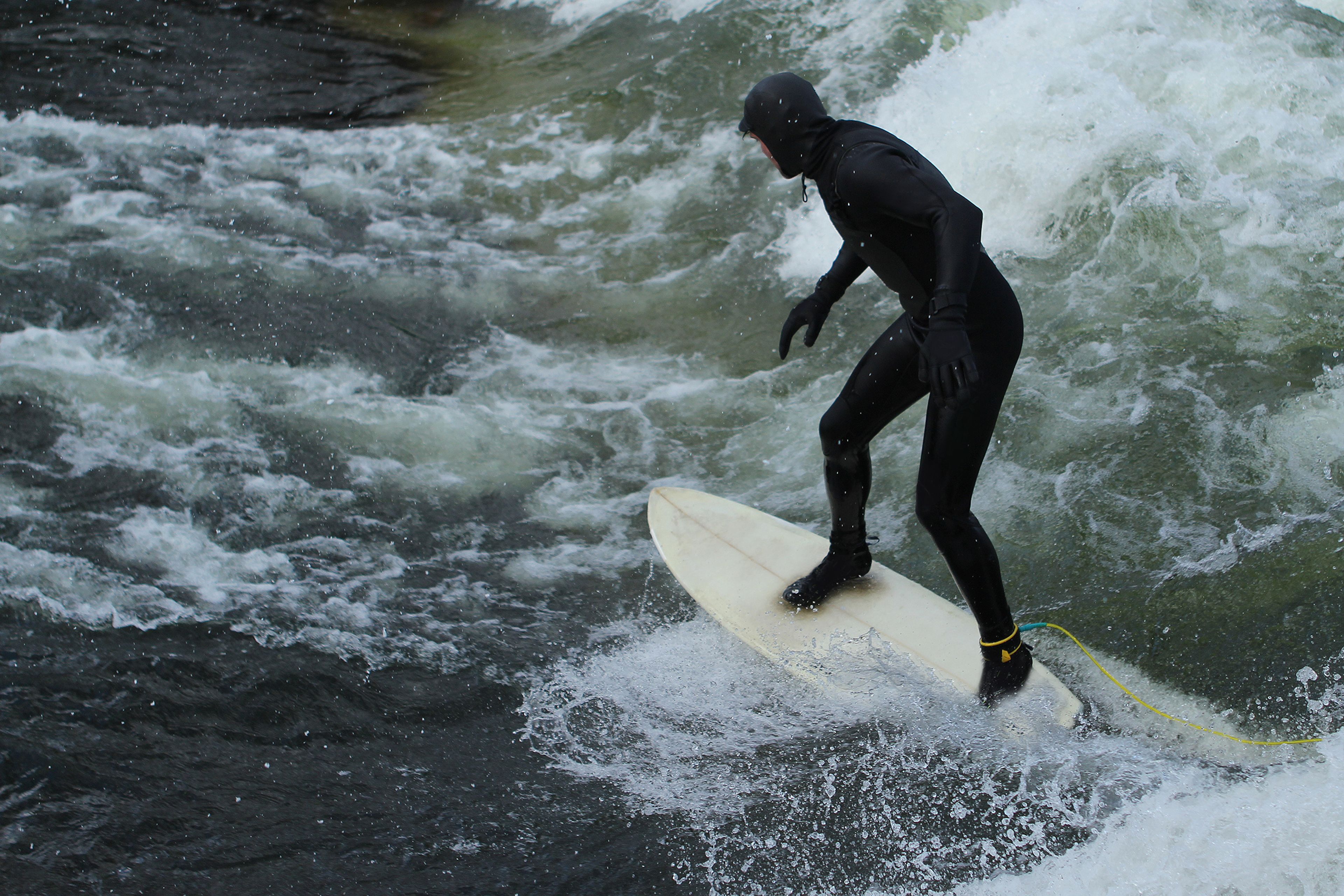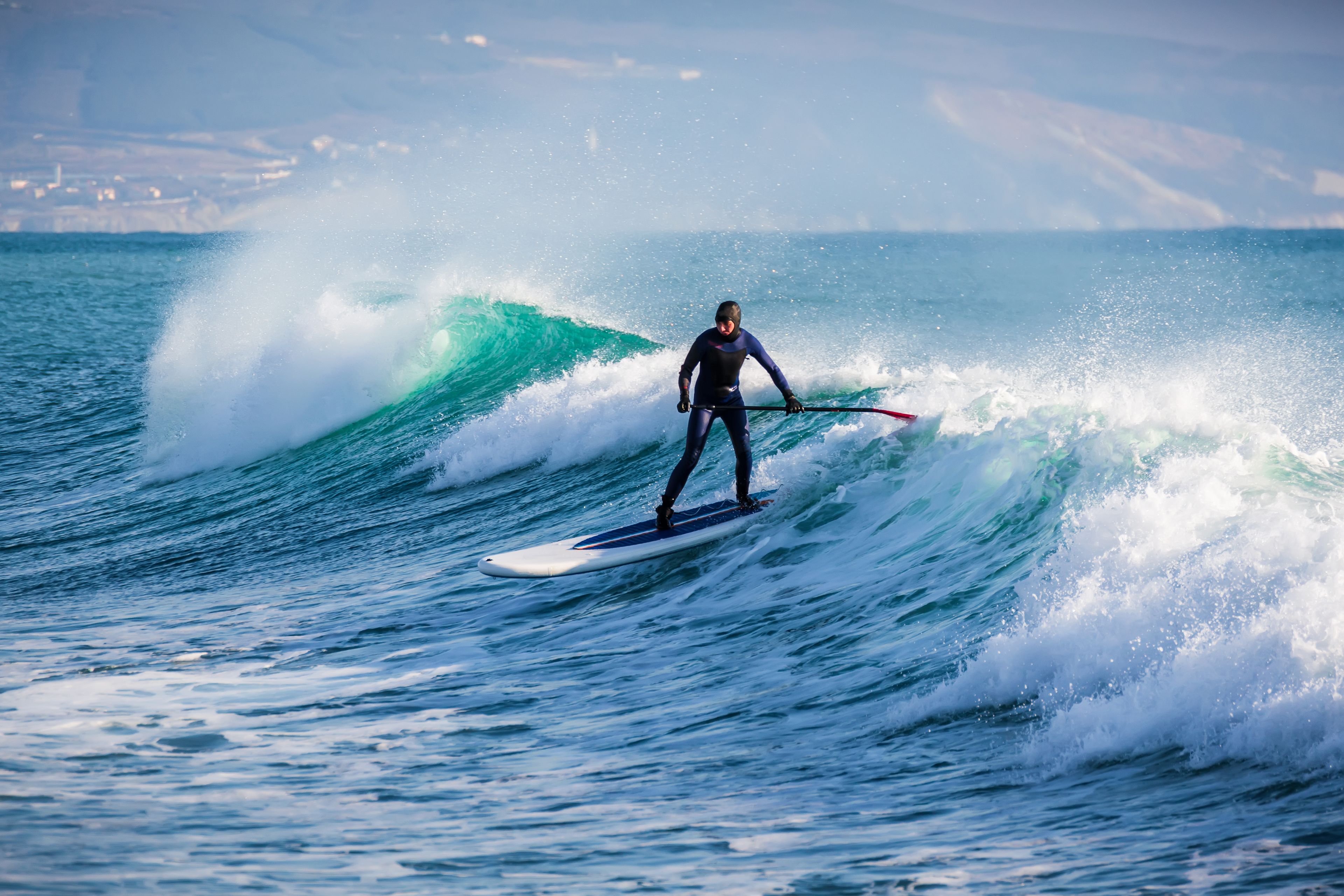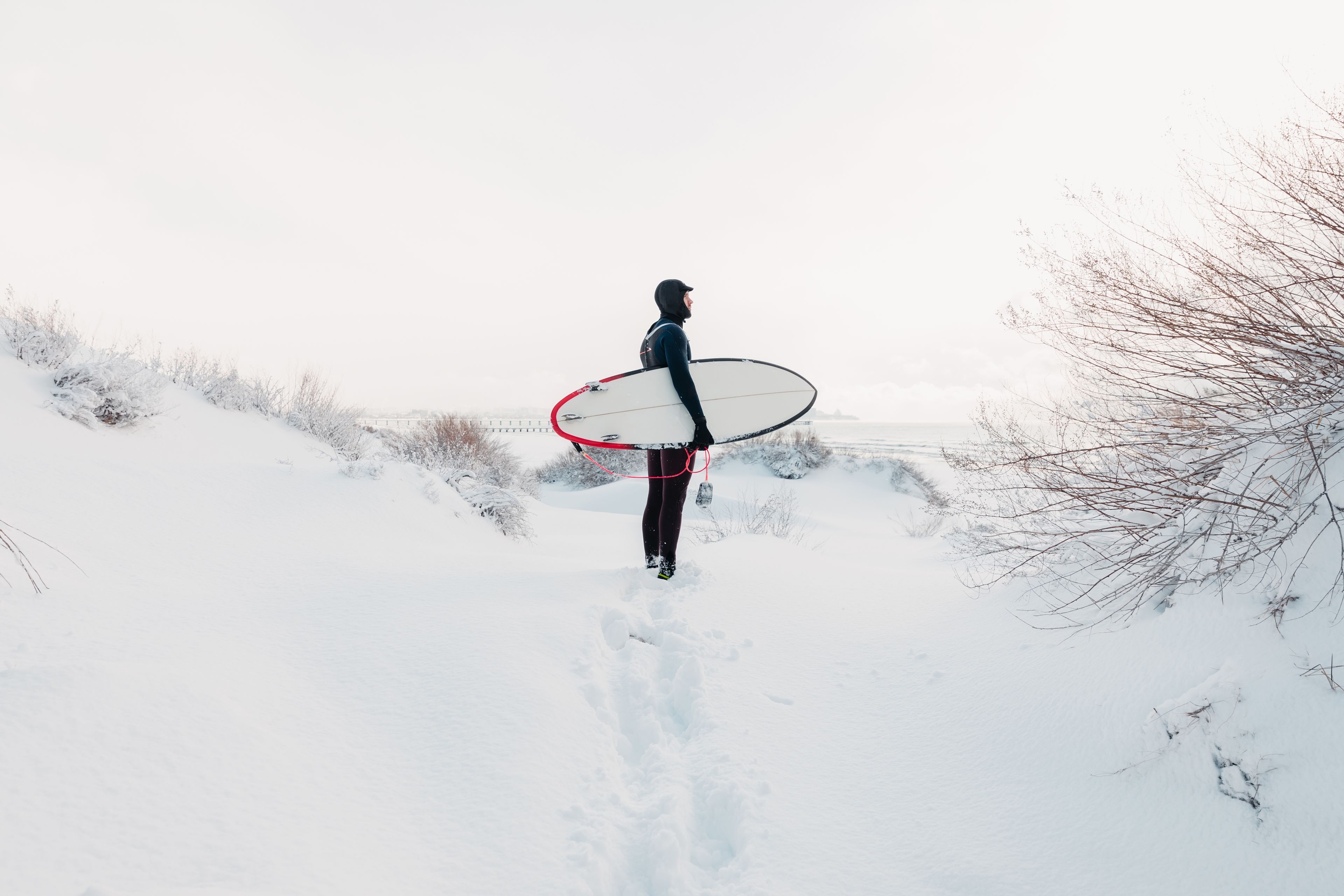
Surf's Up: Enjoying the Waves in Iceland
Jump to chapter
You are breathing in the salty air, waves breaking, and a surfboard beneath your feet. You are ready to enjoy the open ocean, so you’re obviously in Iceland right? While Hawaii, Australia, and California may have been where your mind was headed, you are very wrong. Iceland actually has a popular and secret surfing scene. But it is quite different from surfing on summer islands in the warm sun. Let’s talk about how the surfing scene was established in Iceland, when to go and where to find the best surfing spots.
The Surfing Scene in Iceland
Iceland’s surf scene is commonly known as Arctic Surfing. While many may think it is downright crazy, there are an average of fifty surfers living in Iceland.
It is rumored that surfing has been constant here over the past twenty years. While the sport originated in Hawaii during the 12th century, it sure has gained popularity throughout the world since.
So why Iceland?
Well first off the views you get from your board are out of this world. The stunning mountain backdrops with snowy peaks and deep black sand is just one reason to get out there and brave the cold.
Iceland also has 3000 miles of mostly unused coastline for you to explore. You need to be both brave and patient to try this special kind of surfing.
The waters in Iceland can be a complete beast and are downright dangerous at times. This is why surfing in Iceland is not for the faint of heart. You should be experienced if going alone or at all. Always check the surf forecast too before heading into the arctic water.
Best Time To Go Surfing
If you plan to take advantage of the warmer summer air when surfing, think again.
Winter is the best time to hit the waves in Iceland. This is because winter is the most consistent swell season. The wave steadiness will mirror itself on every side of Reykjanes.
Surfing in the winter is not easy and should be taken on by experienced surfers only. The winds can become more robust and snowstorms can hit at any given time.

Let’s not forget about the frigid temperatures either. The ocean water sits at an average of 35 to 40 degrees Fahrenheit in the winter months. Which may sound insane to attempt.
Luckily some wetsuits can provide a shield against the temperatures. O'Neill, Hurley, and Billabong are just a few brands that offer these. It is not uncommon to find snowboarders in the frigid waters during the winter months. A lot of them are used to adventuring in snowy harsh conditions.
If you are looking for a warmer option May to August is also an ideal time to go. The water temperature normally sits anywhere between 50 and 60 degrees Fahrenheit. During the summer months, flat spells are common in southwest Iceland. This means it is time to adventure to the east and north coasts which have arctic wind swells.
You can pretty much surf any time of the year!
It all comes down to what you are most comfortable with. In addition to how brave you have to be to even try this thrilling sport.
Let’s be clear, arctic surfing is a dangerous activity, especially for nonexperience travelers. Be sure to always go with someone familiar with the Icelandic waters. In addition to the temperature and waves, you will also be very close to threatening and sharp, rocks and cliffs. Never go by yourself until you are properly trained on how to navigate these deep waters.

Where To Go Surfing
Surfing anywhere near the Reykjanes Peninsula will be your best shot at finding the perfect wave. This is because the region is filled with old lava flows. Which causes most of the waves to break over basalt rocks or volcanic reefs.
Þorlákshöfn
is one of the hotspots here, located on the southern coast of Iceland. This small fishing town has an exposed point break that provides good surf. Summer is the best time to surf here too, making it popular with locals. This is due to the offshore winds that are found 36% of the time in June.
Sandvik
If you are newer to surfing you should try out Sandvik. Which is a black sand beach that is located by the southwest tip of the Reykjanes peninsula.
It is great for beginners because the waves can occasionally match the intensity of the reef breaks. In the contrast to that, the waves can also get very heavy here. So make sure to talk with locals and check the surf forecast before attempting anything.
Thorli
is the number one and most commonly known hot spot in Iceland for surfing. It is a large beach that is only a 45-minute drive from Reykjavik. It is popular due to its deep paddling channel and consistent swells. It is also a prime area for advanced surfers looking to up their skills.
Some other popular locations are: Grotta, The Rock, Grindavik, Rolling Stones, Ollie's Shipwreck, Hafnarskeich, and Kirkjusandur.
If you are looking for hidden surfing spots, don’t bother.
The local Icelanders will keep those a well-kept secret, not only for their own use but to keep you safe.
Want to try Arctic surfing in Iceland?
If you want to try Arctic surfing in Iceland you can during your next visit. There are few surf schools located throughout the island.
Arctic Surfers provides tours and surf schools. You can also rent your board and wetsuit from them. So you don’t have to worry about flying yours in.
Tours range from private lessons to a five-day surf school. A truly once-in-a-lifetime bucket list opportunity.

Learning More about Surfing in Iceland
Do you want to learn more about surfing in Iceland? If yes then check out our episode of Iceland Is Weird, Surfing In Iceland.
In this episode, we get a peek into the life of an Icelandic surfer and go on a trip with him and his friend. Some locals that we met up with are Steinarr Lár, Óli Páls, Hermigerfill, Paul Fontaine and last but not least Poseidon. Tune in to learn all about how the locals prepare and take on arctic surfing in Iceland.
Latest Blog Posts
 Places to Visit
Places to VisitGatklettur: Iceland's Stunning Stone Arch
Iceland is packed with cool sights, but some of the best ones are hiding away from the busy tourist spots. Gatklettur is a natural stone arch sitting on the Snæfellsnes Peninsula – a hidden gem most travelers miss. Here’s everything you need to know before you go.
 Highlands
HighlandsGjáin Valley in Iceland: A Hidden Treasure in the Highlands
Iceland has tons of amazing landscapes, but Gjáin Valley truly stands out. This green paradise tucked in the Icelandic Highlands feels magical for anyone willing to step off the tourist path. Planning a trip to Iceland? Here's what you should know about this special spot.
 Canyons
CanyonsMúlagljúfur Canyon: A Secret in South Iceland Waiting to Be Explored
Iceland is a country packed with amazing natural monuments. They can be found in every corner of the country, but certain regions are especially full of these wonders. And, without a doubt, South Iceland has a lot to see and do. Many of the most famous national landmarks are located in this part of the Island, and some are well-known worldwide. However, there are still a few places that not many people, apart from the locals, know and that don’t usually appear on travel guides. If you’re looking for one, then you’re in luck. Múlagljúfur Canyon sits here, a stunning escape for travelers ready to explore beyond the usual stops. This rugged gorge, with its waterfalls crashing down mossy cliffs, showcases the rawest side of Iceland like few others. Away from the busy tourist trails, it offers crisp air, dramatic views, and a peaceful vibe that’s hard to resist. If you’re up for a hike and eager to uncover a lesser-known gem, Múlagljúfur is calling your name.